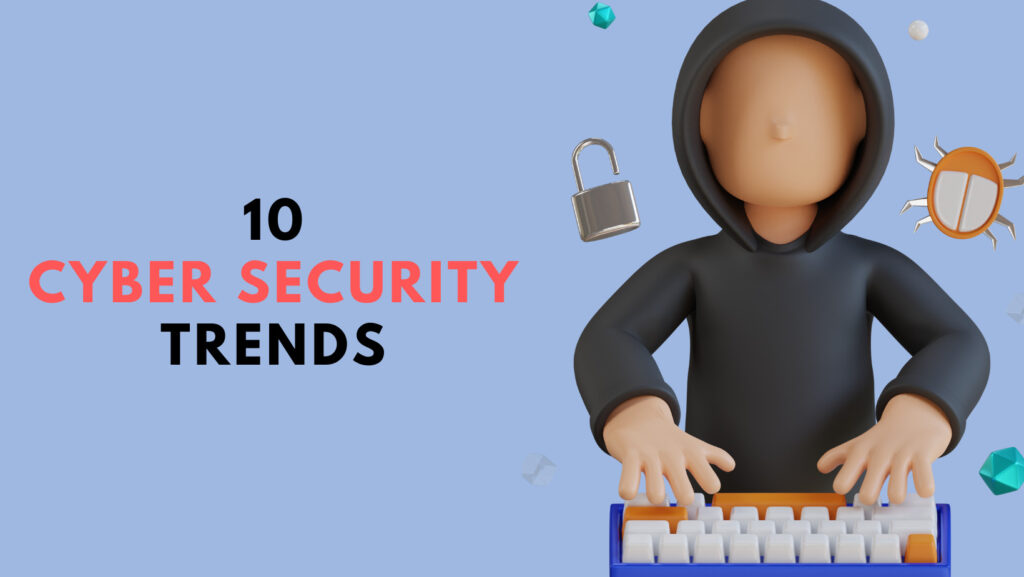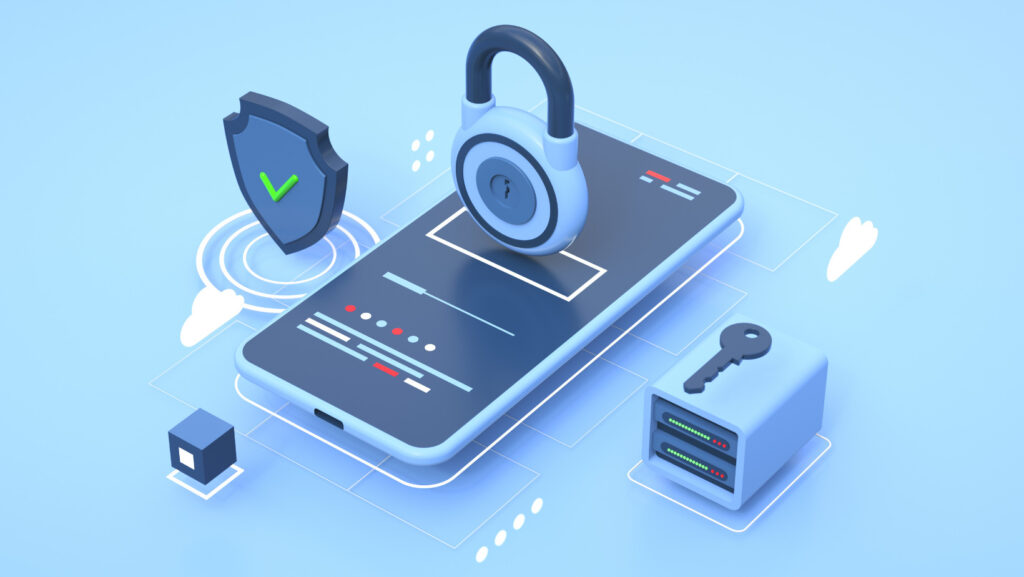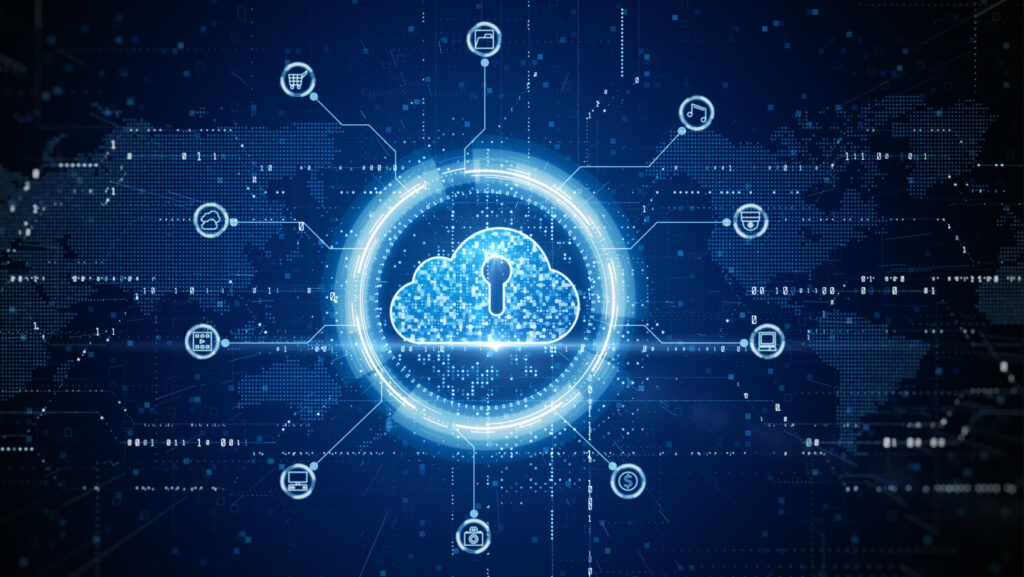Top 10 Cyber Security Trends: Unfolding in 2024

Staying ahead of cyber threat is critical in today’s ever-changing digital landscape. The ever-changing world of cyber security trends, delving into the movements that affect how individuals and companies protect their digital assets. These developments represent the ongoing war between cyber attackers and defenders in our increasingly linked society, from the problems of remote work to breakthroughs in AI-driven security mechanisms.
Table of Contents
What are the top 10 Cyber Security trends?

New threats and ingenious counter-strategies emerge on a daily basis. This brief looks into the present scene, covering the most recent cyber security trends impacting the cyber security profession. The top 20 cyber security trends are mentioned below.
1. Remote Workplace Security
The surge in remote work, accelerated by events like the COVID-19 pandemic, has made remote workplace security a crucial among cyber security trends. It brings new challenges: the expanded attack surface due to remote access, endpoint security for diverse devices, VPNs for secure connections, and the necessity of multi-factor authentication. Cloud security, data loss prevention, and secure collaboration tools have gained prominence. Training against phishing, remote incident response, regulatory compliance, user education, and secure communication are pivotal. As remote work continues, these factors intertwine to shape a complex landscape demanding robust cyber security measures and vigilant adaptation.
2. Multi-Factor Authentication
Multi-Factor Authentication (MFA) stands as a pivotal cyber security trend. As digital threats advance, relying solely on passwords becomes inadequate. MFA introduces an additional layer of security by requiring users to verify their identity through multiple means, such as passwords, bio-metrics, or physical tokens. This approach fortifies protection, curbing unauthorized access. Its adoption continues to rise across industries to thwart phishing, credential theft, and data breaches. MFA’s proactive stance aligns with the evolving threat landscape, underscoring its significance as a safeguard for sensitive information and digital assets.
3. Bio-metric Authentication
Bio-metric authentication comes among a significant cyber security trends, leverages unique biological traits like fingerprints, facial features, and iris patterns to verify user identities. This approach offers heightened security by being difficult to replicate and provides seamless user experience. Bio-metric systems enhance access controls, bolstering defense against unauthorized access, identity theft, and fraud. As technology advances, integrating bio-metrics into authentication methods gains traction across industries, presenting a robust defense against evolving cyber threats. However, ensuring privacy, data protection, and staying ahead of potential vulnerabilities remain key challenges in the widespread adoption of bio-metric authentication.
4. AI – Social Engineering attack
AI-enhanced social engineering attacks marked among notable cyber security trends. Malicious actors employ artificial intelligence to craft highly convincing, personalized phishing attempts and deceptive messages. These attacks exploit human psychology, making them harder to detect. AI-driven systems analyze vast data, crafting tailored approaches that increase success rates. Countering this threat demands heightened user awareness, employee training, and advanced security measures to differentiate authentic communication from sophisticated AI-generated manipulations. As AI continues to refine these tactics, organizations must fortify their defenses, combining technology and education to mitigate the risks posed by AI-enhanced social engineering attacks.
You can also read: 10 Dangerous Social Engineering Attacks
5. Cloud Security
Cloud security emerges among prominent cyber security trends. With increasing data migration to cloud environments, protecting sensitive information becomes critical. Organizations focus on robust authentication, encryption, and access controls. Multi-cloud and hybrid setups add complexity, requiring consistent security measures. Compliance adherence further drives cloud security strategies. As cyber threats evolve, monitoring and threat detection tools gain significance to prevent breaches. Ensuring cloud providers’ shared responsibility model and staying vigilant against misconfigurations become paramount. Balancing convenience and security, cloud security safeguards data, applications, and operations while adapting to the dynamic digital landscape.
6. Ransomware Resilience
Ransomware resilience emerges among vital cyber security trends. The surge in sophisticated ransomware attacks necessitates proactive strategies to prevent, detect, and recover from incidents. Organizations bolster backup and disaster recovery plans to swiftly restore data. Enhanced employee training on phishing and secure practices becomes essential to thwart initial infection vectors. Incident response plans evolve, emphasizing containment and communication. Collaboration with law enforcement and threat intelligence sharing aids in countering ransomware groups. As attacks become more targeted and damaging, ransomware resilience stands as a crucial line of defense, ensuring business continuity and minimizing financial and reputational impact.
7. Blockchain for security
Blockchain’s integration for security comes under notable cyber security trends. Its inherent decentralized and tamper-resistant nature offers promising applications for data integrity, identity management, and secure transactions. Immutable ledgers enhance supply chain transparency, while smart contracts automate agreements securely. However, challenges like scalability and interoperability persist. Industries like finance and healthcare explore blockchain’s potential to prevent breaches and fraud. As adoption grows, harnessing its power requires addressing technical complexities and ensuring alignment with regulatory frameworks. Blockchain’s innovative approach continues to reshape cyber security paradigms, fostering trust and resilience in an increasingly digital world.
8. Zero trust architecture
Zero Trust Architecture stands among pivotal cyber security trends. Departing from the traditional perimeter-based model, it mandates constant verification for all users and devices accessing a network, irrespective of location. This approach assumes potential threats both inside and outside the organization, requiring robust identity verification, strict access controls, and micro-segmentation. By minimizing the attack surface and enhancing data protection, Zero Trust Architecture counteracts advanced cyber threats. As breaches become more sophisticated, its adoption gains momentum across industries, offering a dynamic and proactive defense strategy against evolving cyber risks.
9. Multi-cloud security

Multi-cloud security emerges among crucial cyber security trends. As organizations adopt diverse cloud platforms for flexibility and redundancy, ensuring consistent security measures across environments becomes paramount. It demands centralized visibility, unified access controls, and encrypted data transfers. Effective risk assessment and compliance adherence are essential due to varying cloud providers’ offerings. Challenges of misconfigurations and potential data leaks drive the need for robust monitoring and incident response strategies. Multi-cloud security addresses complexities arising from distributed architecture, safeguarding sensitive data and operations while adapting to the evolving threat landscape.
10. IoT security

IoT security comes under critical cyber security trends as the proliferation of interconnected devices expands. Smart devices, from home appliances to industrial sensors, introduce vulnerabilities that cyber criminals exploit. Protecting against unauthorized access, data breaches, and remote control manipulation is paramount. Strong authentication, regular patching, and secure communication protocols are vital. As IoT adoption grows across sectors, ensuring end-to-end encryption and implementing robust security measures becomes imperative. Proactive risk management and continuous monitoring are key to mitigating evolving threats in the expanding landscape of Internet of Things.
Conclusion
In 2024, these cyber security trends are inducing heightened concern among organizations, compelling them to bolster their security measures. With infrastructure security pivotal for most entities, initiating a cyber security learning journey today can yield dividends tomorrow. As skilled experts in the field command top salaries in the IT sector, organizations recognize the value of cultivating proficiency in cyber security to navigate evolving threats and seize career opportunities in this high-demand domain.
FAQs
Why are cyber security trends important?
Cyber security trends provide insights into the changing threat landscape and help organizations stay ahead of potential risks. Understanding these trends enables proactive planning, implementation of relevant security measures, and better preparedness against emerging cyber threats.
How can individuals stay updated on cyber security trends?
Individuals can stay updated on cyber security trends by following reputable industry publications, subscribing to security blogs, participating in webinars and conferences, and engaging with online communities dedicated to cyber security discussions.
What are some current cyber security trends?
Current cyber security trends include Zero Trust Architecture, AI-driven threat detection, multi-factor authentication, cloud security enhancements, ransomware resilience strategies, and increased focus on IoT security, among others.






